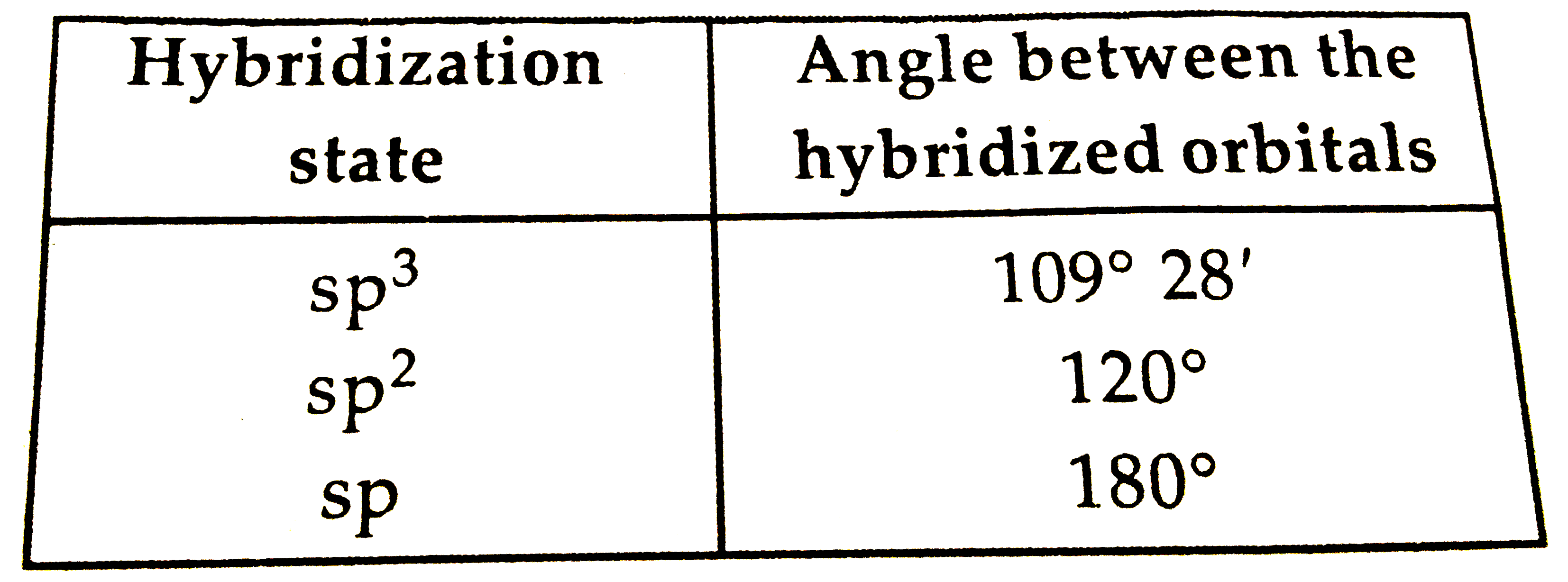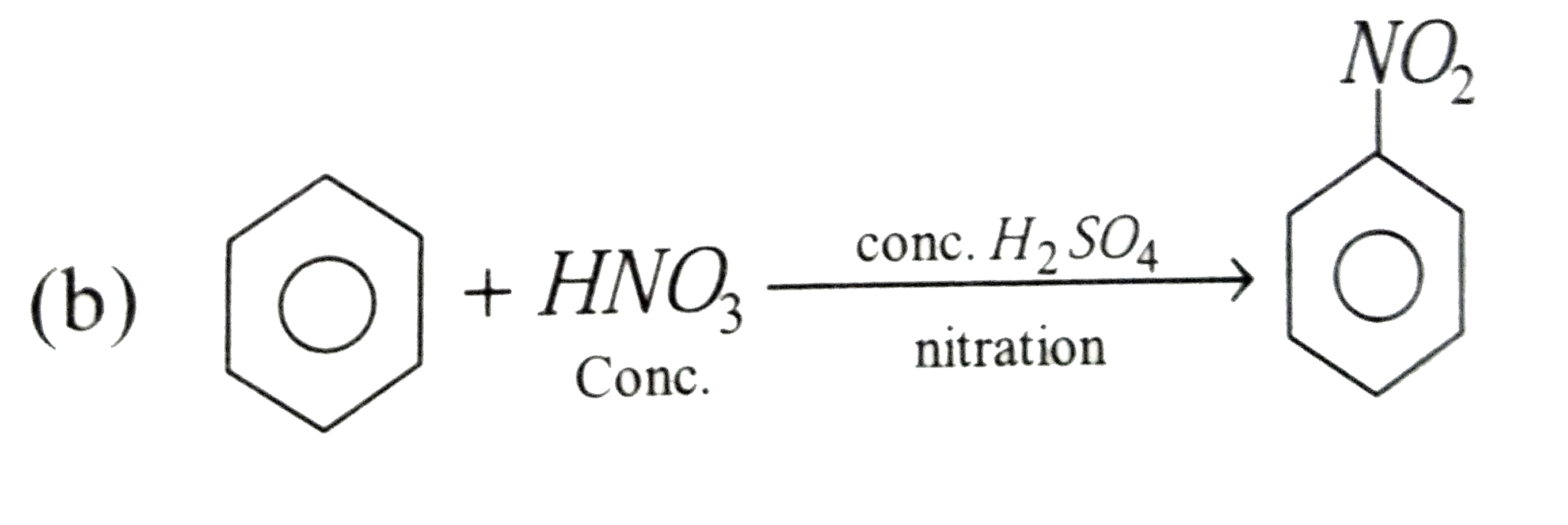InterviewSolution
This section includes InterviewSolutions, each offering curated multiple-choice questions to sharpen your knowledge and support exam preparation. Choose a topic below to get started.
| 6101. |
What is the amount of PCl_5 (in mole) need to be aded to one litre vesselat 250^Oc in order to obtain a concentration of 0.1 moles of Cl2 ?Kcfor PCl5 ⟺PCl3 +Cl2is 0.0414 mol/litre |
|
Answer» 0.3415 |
|
| 6102. |
The specific conductivity of N/10 KCl solution at 20^(@)C is 0.0212 ohm^(-1) cm^(-1) and the resistance of the cell containing this solution at 20^(@)C is 55 ohm. The cell constant is : |
|
Answer» `"(a) 3.324 CM"^(-1)` `1/A=Kxx1/C=KxxR`=0.0212 X 55 =`1.166 cm^(-1)` |
|
| 6103. |
When calcium formate is distilled with calcium acetate , the product is : |
|
Answer» ACETIC acid 
|
|
| 6104. |
When the hybiridization state of the carbon atom changes as follows: sp^(3) to sp^(2) to so, the angle between thehybridized orbitals. |
|
Answer» decreases gradually 
|
|
| 6105. |
Tin (IV) chloride is |
|
Answer» a covalent COMPUND |
|
| 6106. |
Which is used as a preservative for biological specimens ? |
|
Answer» Formalin |
|
| 6107. |
Which of the following pairs of compounds are enantiomers |
|
Answer»
|
|
| 6108. |
Write the chemical tests to distinguish between Acetaldehyde and formaldehyde. |
| Answer» Solution :ADD fehling's solution to each of them separately. Acetaldehyde will give yellow PRECIPITATE of iodoform where benzaldehyde will not REACT. | |
| 6109. |
What is the role of SiO_(2) in the extration of copper? |
|
Answer» SOLUTION :The copper ore is heated in a REVERBERATORY furnace after mixing with SILICA. IRON oxide forms a slag of `FeSiO_(3)" with "SiO_(2)` `{:(FeO + SiO_(2) to FeSiO_(3)), ("Slag"):}` The slag is removed and copper matte is then charged into the silica line converter. |
|
| 6110. |
The solubility of an aqueous solution of Mg(OH)_(2) be x then its K_(sp) is ……………………… |
|
Answer» `4x^(3)` `K_(SP) = 4x^(3)` |
|
| 6111. |
Thermal stabilities of the halogen fluorides are |
|
Answer» `BrF_(3)gtCIF_(3)` |
|
| 6112. |
Which of the following statements is / are correct |
|
Answer» In GAS phase the basic strength order among the three types of AMINES is `3^(0)gt2^(0)gt1^(0)`. Amines Basicity :- `3^(@)gt 2^(@)gt1^(@)` Amines B.Pt :- `1^(@)gt 2^(@)gt 3^(@)` no of H-bonds ALCHOLS form STRONG H-bond with water than amines Due to resonance aromatic amines have lass C-N bond bength |
|
| 6113. |
Which of the following does not determine the translational kinetic energy of an ideal gas ? |
|
Answer» Temperature |
|
| 6114. |
Which of the following process is for purification of metals? |
| Answer» Answer :C | |
| 6115. |
What modification can you suggest for Hardy-Schulze law? |
|
Answer» The law can be modified to add the following. If oppositely CHARGED sols are mixed in suitable proportions to neutralise the CHARGES of each other, coagulation of both sols takes place. |
|
| 6116. |
What is the coordination number of B_(2)0_(3) ? |
|
Answer» 4 |
|
| 6117. |
Write the structure of the following species : |
Answer» SOLUTION : 
|
|
| 6118. |
Which of the following contain S - O linkage |
|
Answer» `H_2S_2O_7` |
|
| 6119. |
Which of the following reactions takes place when a mixture of concentrated HNO_3 and H_2SO_4 reacts on benzene at 350 K |
|
Answer» SULPHONATION 
|
|
| 6121. |
Which of the following diazonium salt is most stable? |
|
Answer» p-Nitrobenzenediazonium chloride |
|
| 6122. |
Which of the following maintains constant sugar level in blood ? |
|
Answer» Gibberlins |
|
| 6123. |
What are local anaesthetics? Give example. Mention its uses. |
|
Answer» Solution :(i) Local anaesthetics cause LOSS of sensation in the area in which it is applied without LOSING consciousness. They block pain perception that is transmitted VIA peripheral nerve fibre to the brain. e.g., procaine, lidocaine. (ii) They are often used during MINOR SURGICAL procedures. |
|
| 6125. |
Which of the following characteristics apply both to ethene and ethyne - |
|
Answer» Form white PRECIPITATE with `AgNO_(3)` solution |
|
| 6126. |
The volumes of gases H_(2), CH_(4), CO_(2) and NH_(3), adsorbed by 1 g charocal at 298 K are in the order . |
|
Answer» `H_(2) GT CH_(4) gt CO_(2) gt NH_(3)` |
|
| 6127. |
Which is not the disproportionation reaction? |
|
Answer» `3H_(3)PO_(2) to 3H_(3)PO_(3)+PH_(3)` |
|
| 6128. |
The reducing power of divalent species decreases in the order : |
|
Answer» `GegtSngtPb` |
|
| 6129. |
What role does the molecular interaction play in solution containing chloroform and acetone ? |
| Answer» SOLUTION :H-bonding formed, results in negative DEVIATION from Raoult’s LAW. | |
| 6130. |
Using the data (all values and in kcal/mol at 25^(@) C) given below: DeltaH_(l)^(@) CO_(2)(g) = -94.05 DeltaH_(t)^(@) CO(g) = -26.41 DeltaH_(l)^(@)H_(2)O(l) = -68.32 DeltaH_(l)^(@)H_(2)O(g) = -57.79 DeltaH_("combustion")^(@) (C_(6)H_(16)) = -1302.7 Mean molar heat capacities C_(p) (cal/mol) at 25^(@) C. CO(g) = 6.97 H_(2)O(g) = 5.92 CO_(2)(g) = 8.96 Calculate the no. of moles of CO and CO_(2) produced, when 0.1 mol of C_(8)H_(18) at 25^(@) C is completely burned at constant pressure in some oxygen gas at 25^(@) C yielding as products gaseous H_(2)O, CO and CO_(2) at 300^(@) C, the process yielded 90.20 kcal of heat to the surroundings. |
|
Answer» Solution :`C_(8)H_(18) + 25/2 O_(2)(g) to 8CO_(2)(g) + 9H_(2)O(L)` `DeltaH^(@) = 8DeltaH_(l)^(@) CO_(2)(g) + 9DeltaH_(l)^(@) H_(2)O(l) -DeltaH_(l)^(@)(C_(8)H_(18))` `DeltaH_(l)^(@)(C_(6)H_(18)) = -64.6` kcal REACTIONS under consideration re `C_(8)H_(18) + 25/2 O_(2)(g) to 8CO_(2)(g) + 9H_(2)O(g).DeltaH_(2)` `DeltaH_(1) = 8(-94.05) + 9(-57.79) -(-64.6) = -1207.9` kcal/mol. `DeltaH_(2) =8(-26.41) + 9(-57.79) -(-64.6) = -666.8` k cal/mol Let moles of CO PRODUCED =X `therefore` moles of `CO_(2)` produced = `0.8 -x` `(666.8 x)/8 + (0.8 -x)/8 1207.9 = 120.79-67.64`x. Heat utilized (in kcal): `90.20 + 275 [x(6.97) + (0.8 -x)8.96 + (0.9)(5.92)] xx 10^(-3)` `=93.64 - 0.547` Heat utilized = Heat generated `120.79 - 67.64 x = 93.64 - 0.547`x `x=0.405` mol CO `0.8-x =0.395` mol `CO_(2)` |
|
| 6131. |
What type of analgetics are chiefly used for the relief of pains of terminal cancer ? |
| Answer» SOLUTION :Narcotic analgesics like MORPHINE and its homologues in medicinal DOSES are used for the RELIEF of pains of terminal CANCER. | |
| 6132. |
Which polymer is not obtained by addition polymerization ? |
|
Answer» POLYSTYRENE |
|
| 6133. |
Write the formula of the following coordination compound Mercury(I) tetrathiocyanatocobaltate (III). |
| Answer» SOLUTION :`HG[CO(SCN)_4]`. | |
| 6134. |
When RNA is hydrolysed, there is no relationship among the quantities of different bases obtained. What does this fact suggested about the structure of RNA ? |
| Answer» Solution :Since DNA has double stranded STRUCTURE with specific base pairing, there is some relationship between the BASES. For EXAMPLE, the number of moles of adeninewill be EQUAL to THYMINE and the number of moles of guanine will be equal to cytosine | |
| 6135. |
Which of the following sulphateisinsolublein H_(2)O |
|
Answer» `CuSO_(4)` |
|
| 6136. |
Which of the following cannot be hydrolysed |
|
Answer» A SALT of weak ACID and strong BASE |
|
| 6137. |
Which of the following is correct order of acid strength among I(CO_2), II(SiO_2), III(SO_3), IV(N_2O_5) |
|
Answer» `II ltI LT IV lt III` `SiO_2 ltCO_2 lt N_2O_5lt SO_3`. |
|
| 6138. |
What are lyophilic and lyophobic sols? Give one example of each type. Why are hydrophobic sols easily coagulated? |
|
Answer» Solution :Lyophilic SOLS: Colloidal sols directly formed by mixing SUBSTANCES LIKE gums, GELATIN, starch, rubber, etc. with a SUITABLE liquid (The dispersion medium) are lyophilic sols. An important characteristic of these sols is that if the dispersion medium is separated from the dispersed phase (say by evaporation) the sol can be reconstituted by simply remixing with the dispersion medium. That is why these sols are also called reversible sols. These sols are quite stable and cannot be easily coagulated. Lyophobic sols: These colloidal sols can only be prepared by some special methods. These sols are readily precipitated on the addition of small amount of electrolytes, by heating or by shaking and hence are not stable. Hydrophobic sols are water hating. They are formed by indirect method. These sols are irreversible sols. These sols are readily precipitated by the addition of small amount of electrolytes, by heating or by shaking and hence are not stable. |
|
| 6139. |
Which of the following is produced during condensation polymerization ? |
|
Answer» WATER |
|
| 6140. |
Which of the following statements is not correct regarding the adsorption of a gas on the surface of a solid? |
|
Answer» On increasing temperature, adsorption INCREASES CONTINUOUSLY. |
|
| 6141. |
Transition metals in which vacent spaces are occupied by small atoms such as hydrogen, carbon etc. arecalled "….................." |
|
Answer» |
|
| 6142. |
Which of the following statements are true about the addition polymerization? |
|
Answer» Addition POLYMERIZATION occurs between molecules containing double or triple bond. |
|
| 6143. |
Which of the following polymer is not synthesized from acidic monomer ? |
|
Answer» NYLON - 6, 6 |
|
| 6144. |
Which of the following is incorrect with respect to property indicated ? |
|
Answer» `E.N:FgtClgtBr` |
|
| 6145. |
The wrong statement is |
|
Answer» heat of NEUTRALISATION is ALWAYS negative |
|
| 6146. |
Which of the following is an example of freon ? |
|
Answer» `BrCH_2CH_2Cl` |
|
| 6147. |
The value of van der Waals constant 'a' is makimum for |
|
Answer» Helium |
|
| 6149. |
Why are all aqueous solution of the cobaltous salts pink? |
| Answer» Solution :All AQUEOUS solution of cobaltous salts are pink due to the formatiion of `[CO(H_(2)O)_(6)]^(2+)` ions. | |
| 6150. |
The synthetic polymer which resembles natural rubber is |
| Answer» Answer :A | |